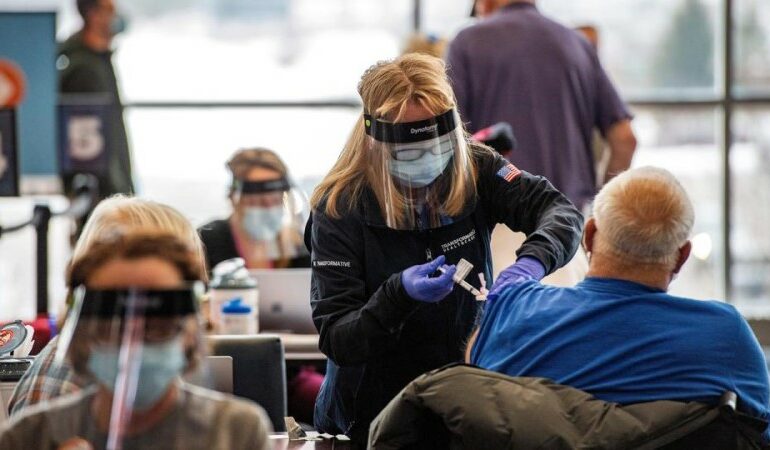More than 101 million doses of Covid-19 vaccines have now been administered worldwide in 64 countries, according to data compiled by the New York Times and Bloomberg—but while some high-income countries are moving quickly to vaccinate their residents, low-income countries and some larger nations are lagging far behind.
The United States is leading the world in total vaccine doses administered with 32.2 million as of Feb. 1, according to the University of Oxford’s Our World in Data project, followed by China (24 million), the United Kingdom (9.79 million), Israel (4.99 million) and India (3.95 million).
Israel has the highest vaccination rate, having administered 57.65 doses per 100 people, followed by the United Arab Emirates (34.79 per 100 people), U.K. (14.42), Bahrain (10.16), and the U.S. (9.63).
The European Union’s vaccination rate is far behind the U.S. and U.K. at only 2.86 doses per 100 people, as the continent faces vaccine production issues and other shortages: Malta and Denmark have the highest vaccination rates in the EU (6.29 and 4.66 doses per 100 people, respectively), while Spain, Italy, Portugal, and Germany have only achieved approximately three doses per 100 people, and France and Belgium have even fewer.
Though China has the second-highest number of administered doses, the country has only administered 1.67 doses per 100 people, and other heavily populated countries are also far behind the U.S.’s pace: Brazil has administered one dose per 100, Russia 0.69 doses (as of Jan. 13) and India 0.29 doses.
Vaccinations have so far overwhelmingly favored high-income countries, with a Vox analysis Friday finding that of the 80 million vaccines distributed to that point, only 55 had been given out in low-income countries (in Guinea, where they were given to public officials in December on an experimental basis).
Within the U.S., the states with the highest vaccination rates according to Bloomberg are Alaska (16.87 doses per 100 people), West Virginia (14.67), and North Dakota (13.86), while the lowest are Idaho (6.96), Alabama (7.33) and Kansas (7.88).
BIG NUMBER
4.25 million. That’s the approximate number of Covid-19 vaccine doses being administered worldwide each day, according to Bloomberg.
WHAT TO WATCH FOR
Some major nations have not even yet begun to distribute vaccines: Japan, South Korea, Hong Kong and Australia will begin vaccinations in February. Low-income countries will largely receive their vaccine doses through Covax, a World Health Organization program that aims to equitably distribute vaccines to lower-income countries. Those vaccinations are likely to begin in February, but the rollout could be slow, with a December study from the People’s Vaccine Alliance finding at least 90% of people in lower-income countries are unlikely to be vaccinated by the end of 2021. The WHO warned in January that ‘vaccine hoarding’ by the richest countries would be a “catastrophic moral failure” that could prolong the Covid-19 pandemic and have negative economic consequences.
SURPRISING FACT
As of mid-January, high-income countries were responsible for 60% of Covid-19 vaccine purchases despite making up only 16% of the world’s population, according to Duke University’s Global Health Institute. Canada has the highest amount of purchased Covid-19 vaccine, which Duke notes is enough to vaccinate “more than five times” the country’s population.
KEY BACKGROUND
Eight Covid-19 vaccines are currently being administered around the world, according to data from Our World In Data analyzed by the Times. The Pfizer/BioNTech vaccine is being used most widely, in 49 countries, followed by the Moderna vaccine (13 countries) and Oxford-AstraZeneca vaccine (seven countries). The vaccines that have been approved so far all require two separate shots to be fully effective, though the U.S. could soon approve the Johnson & Johnson vaccine, which only requires one dose.














